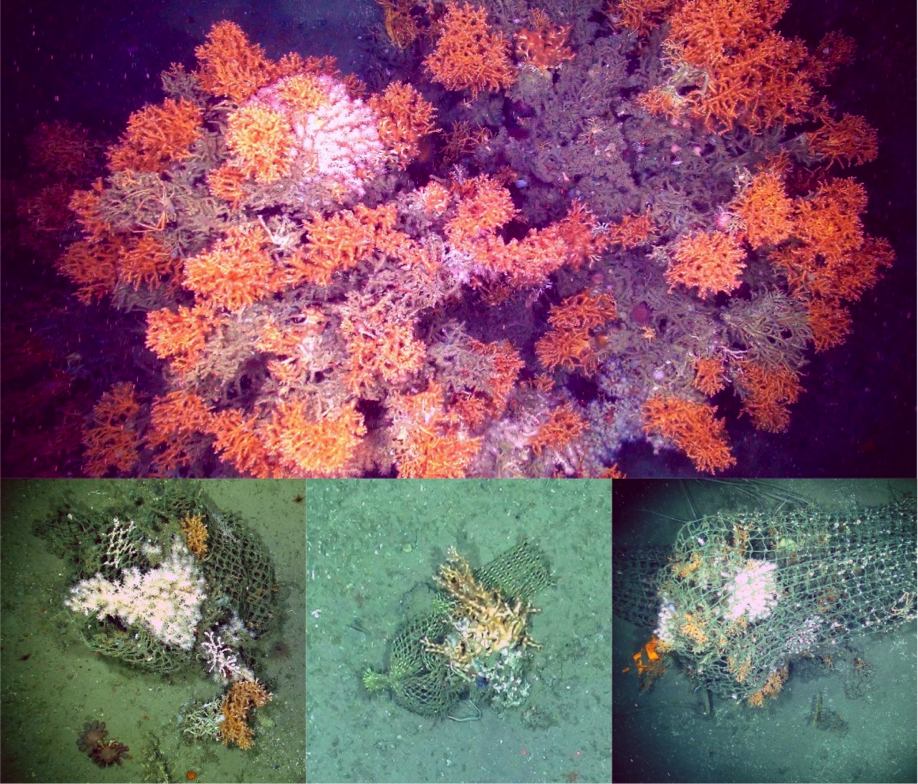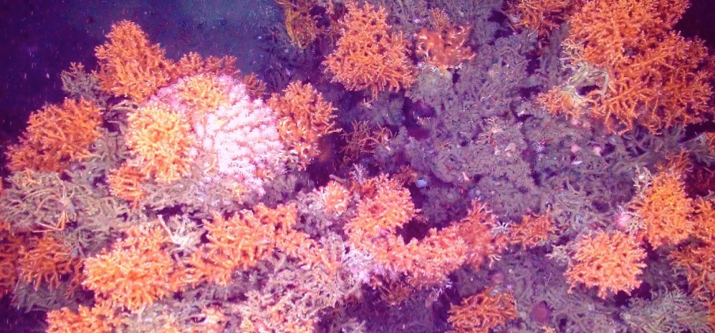[from Deep-Sea Life Issue 14]
DY108: Return to the Darwin Mounds, the UK’s 1st deep-sea MPA
Brian Bett1*, Veerle Huvenne1*, et al.
1National Oceanography Centre, UK
*Correspondence: bjb@noc.ac.uk, viah@noc.ac.uk
September found us returning to the Darwin Mounds for our sixth look at these cold-water coral systems. In the now 21-year time span since we discovered the site, we have documented its degradation by bottom trawling, contributed to its designation and protection as the UK’s first deep-sea Special Area of Conservation (SAC), and begun the process of monitoring its progress. In the course of RRS Discovery cruise 108 we were able to confirm the continuing good status of corals in the West Field, the continuing poor condition of corals in the East Field, and the occurrence of particularly good coral frameworks in the Pocket Field (upper image), last imaged in 2000.
In broad terms, little appeared to have changed since our last visit in 2011, at which time the ban on bottom contact fisheries (initiated in 2003) appeared to have been effective, but there was little if any evidence of coral recruitment or regrowth in the impacted East Field (see Huvenne et al., 2016. Biol. Conserv., 200: 60-69. doi:10.1016/j.biocon.2016.05.030). Highlights of DY108 included – the good news that settlement plates, and their moorings, deployed in 2011 and recovered during the cruise had very healthy epigrowth including corals (Desmophyllum spp.) – and the bad news that macroplastic debris continues to stand on the Darwin Mounds coral frameworks in significant quantities, notably lost / discarded fishing gear (lower images).
DY108 was funded by the UK Natural Environmental Research Council’s Climate Linked Atlantic Sector Science (CLASS) project that enables us to carry out time-series research at the Darwin Mounds SAC, the Greater Haig Fras Marine Conservation Zone (MCZ; see Benoist et al., 2019. Conserv. Biol., 33: 1174-1186. doi:10.1111/cobi.13312) in the Celtic Sea, the Whittard Canyon MCZ, and the long-running Porcupine Abyssal Plain Sustained Observatory. The cruise was further boosted by a joint venture with the University of Southampton’s Ocean Perception team and their BioCam system described in this article.


